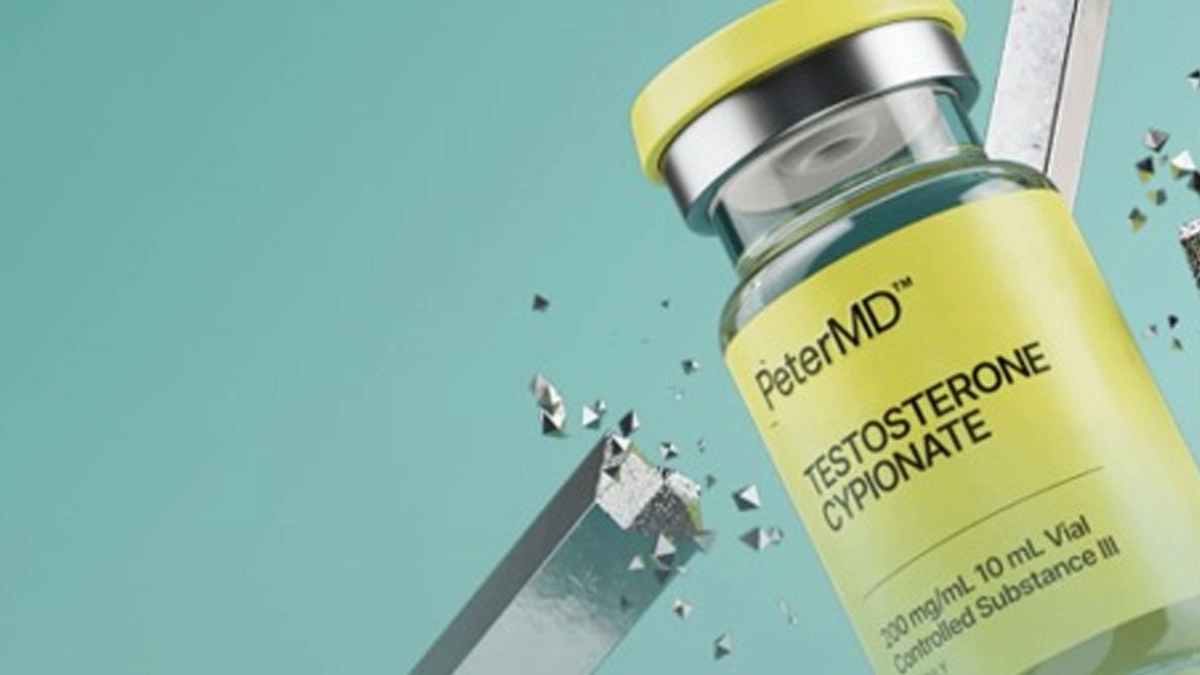Copyright latestly

Testosterone Replacement Therapy, or TRT, is a medical treatment designed to restore testosterone levels in men with low hormone production, also called hypogonadism. Testosterone is a vital hormone responsible for muscle mass, energy, libido, mood regulation, and overall vitality. trt cost involves medically supervised administration of testosterone to achieve balanced hormone levels, improve well-being, and address symptoms like fatigue, decreased libido, mood swings, and loss of muscle mass. Who Needs TRT? Men who experience symptoms of low testosterone may benefit from TRT. Common symptoms include fatigue, reduced sexual desire, difficulty concentrating, depression, irritability, decreased muscle strength, increased body fat, and low bone density. TRT is recommended only after proper medical evaluation and laboratory testing confirm testosterone deficiency. Self-diagnosis and unsupervised use are not safe or effective. A licensed healthcare provider can determine whether therapy is necessary and safe for each individual. What Factors Affect TRT Costs? The cost of TRT varies depending on multiple factors: • Type of testosterone: Injections, gels, patches, and pellets differ in price. Injections are often less expensive, while pellets may have higher upfront costs. • Dosage and frequency: Higher doses or more frequent administration increase costs. • Laboratory tests: Blood tests to monitor hormone levels, liver function, cholesterol, and other markers add to the overall expense. • Doctor consultations: Initial evaluations and ongoing follow-ups may be charged per visit or included in treatment packages. • Location and provider: Costs vary based on geography, clinic type, and whether the service is provided through traditional clinics or online platforms. Understanding these factors helps men plan financially and select the best option for their needs. How Much Does TRT Typically Cost? TRT costs vary widely depending on the delivery method and frequency of treatment. On average, monthly costs range from $100 to $400 for injections, $150 to $500 for gels, and $250 to $800 for patches. Pellets may cost $500 to $1,000 every three to six months, including insertion procedures. Additional expenses for laboratory tests and follow-up appointments should be considered. While TRT can be a significant financial commitment, understanding the breakdown of costs helps patients make informed decisions. Are Laboratory Tests Included in TRT Costs? Some clinics or online providers include lab testing in treatment packages, while others charge separately. Lab tests are essential for diagnosing low testosterone and monitoring therapy to ensure safety and effectiveness. These tests typically include total and free testosterone, estradiol, hematocrit, liver function, cholesterol levels, and sometimes PSA (prostate-specific antigen) testing. Costs for lab work can range from $50 to $200 per test, depending on location and provider. Does Insurance Cover TRT? Insurance coverage for TRT depends on the policy and whether the therapy is deemed medically necessary. Some plans cover TRT when low testosterone is confirmed through lab testing and symptoms are documented, while others classify it as elective or cosmetic, limiting coverage. Patients should verify coverage, check for prior authorization requirements, and understand co-pays or deductibles. Even when insurance partially covers treatment, out-of-pocket expenses for medication, lab tests, and follow-ups may still apply. How Does the Type of Testosterone Affect Cost? Different forms of testosterone have varying costs and benefits: • Injections: Typically the most affordable option, with costs ranging from $100 to $400 per month. • Gels: Convenient for daily application, with prices around $150 to $500 monthly. • Patches: Continuous delivery through skin application, often $250 to $800 monthly. • Pellets: Implanted under the skin for slow release over months, usually $500 to $1,000 per procedure. Choosing the appropriate form depends on lifestyle, medical guidance, and budget considerations. Can TRT Be Administered at Home? Yes, many men can administer certain forms of TRT at home. Injectable testosterone can be self-administered after proper instruction from a healthcare provider. Gels and patches are applied directly to the skin. Pellets require a medical procedure for insertion and must be performed in a clinic. Home administration can reduce travel costs and offer convenience, but it is essential to follow professional guidance for safe and effective dosing. How Do Follow-Up Visits Affect Overall Costs? Follow-up appointments are essential for monitoring testosterone levels, evaluating symptoms, and adjusting dosages. Some providers include follow-ups in monthly treatment packages, while others charge per visit, typically $50 to $150. Regular monitoring prevents side effects and ensures therapy effectiveness, making these costs an important part of overall financial planning for TRT. What Are the Hidden Costs of TRT? Beyond medication and consultations, several hidden costs may arise: • Lab testing: Ongoing blood work to track hormone levels and safety markers. • Travel expenses: Visits to clinics for injections, pellet insertion, or lab testing. • Medical equipment: Needles, syringes, alcohol swabs, and storage containers for at-home injections. • Side effect management: Treatment for acne, elevated hematocrit, or other complications may add to costs. Considering these factors helps men plan for the total financial commitment of TRT. Are Online TRT Options More Cost-Effective? Online TRT providers can offer convenience and competitive pricing. Virtual consultations reduce travel costs and allow flexible scheduling. Prescription delivery saves time and ensures privacy. Many online platforms include lab testing packages and follow-up plans, simplifying overall management. While costs are comparable to in-person clinics, online therapy often provides better accessibility and streamlined care for those with busy schedules. Does TRT Require Long-Term Investment? TRT is often a long-term therapy, especially for men with age-related testosterone decline or permanent medical conditions. Monthly costs accumulate over time, and ongoing lab monitoring and follow-ups are necessary to maintain safety and effectiveness. Some men may require therapy indefinitely, while others with reversible causes of low testosterone may discontinue after lifestyle improvements or temporary treatments. Understanding the long-term financial commitment is essential for sustainable therapy. How Can Men Minimize TRT Costs? Several strategies can help reduce costs without compromising safety: • Comparing providers: Review pricing for medication, labs, and follow-ups across clinics and online platforms. • Bulk purchasing: Some providers offer cost savings for longer prescription supplies. • Insurance verification: Understanding coverage, co-pays, and prior authorization can lower out-of-pocket expenses. • Choosing the right form: Selecting an appropriate testosterone delivery method for lifestyle and budget. • Maintaining healthy lifestyle habits: Diet, exercise, and stress management may reduce required dosage over time. Are There Financial Assistance Programs for TRT? Some manufacturers, clinics, and online platforms offer financial assistance programs or discounts for eligible patients. These programs may reduce medication costs, cover lab tests, or offer payment plans for long-term therapy. Patients should inquire about available programs and explore options that make therapy more affordable while ensuring safe and medically supervised care. How Often Should Costs Be Reviewed During TRT? Patients should periodically review TRT-related expenses to manage their budget effectively. Costs may change due to dosage adjustments, lab frequency, or therapy duration. Reviewing expenses every few months helps identify opportunities for savings, ensures adherence to therapy, and avoids unexpected financial burdens. Open communication with providers about cost concerns is important for sustainable treatment. What Are the Benefits of Investing in TRT? While TRT can be a significant financial commitment, the benefits often outweigh costs when therapy is properly managed. Patients typically experience increased energy, improved mood, enhanced sexual function, better muscle mass and strength, and overall quality of life improvements. Investing in professional care ensures safety, minimizes side effects, and maximizes the effectiveness of therapy. Can Costs Vary by Geographic Location? Yes, TRT costs differ depending on where care is provided. Urban centers or specialized clinics may have higher fees for consultations, lab work, and procedures, while rural areas may have lower charges. Online platforms can help standardize costs by offering virtual care and prescription delivery regardless of location. Comparing local and online options helps patients select cost-effective solutions. What Are the Typical Steps Included in TRT Costs? TRT expenses generally cover several key components: 1. Initial consultation with a licensed provider. 2. Laboratory testing to confirm low testosterone and monitor therapy. 3. Prescription testosterone in the chosen form (injection, gel, patch, or pellet). 4. Ongoing follow-ups to adjust dosage and assess health markers. 5. Equipment or supplies for home administration if applicable. 6. Management of side effects or complications if they arise. Understanding each step helps patients budget effectively and anticipate total costs. Is it Worth Paying for Professional TRT? Yes, paying for professionally supervised TRT ensures safety, accuracy, and effectiveness. Self-administering testosterone or purchasing unregulated products can lead to serious health risks, including hormonal imbalance, cardiovascular complications, liver issues, and fertility problems. Professional care includes lab monitoring, dosage adjustments, and personalized guidance, making it a worthwhile investment for long-term health and well-being. Conclusion TRT is a valuable treatment for men with low testosterone, offering significant benefits for energy, mood, sexual health, and overall vitality. Understanding the costs associated with therapy—including medication, lab tests, consultations, and follow-ups—is essential for planning and budgeting. By considering factors such as delivery method, duration, insurance coverage, and lifestyle, men can access effective TRT safely and affordably. Investing in professional, medically supervised care ensures optimal results, long-term safety, and improved quality of life while providing clarity on the financial commitment required for this transformative therapy.



